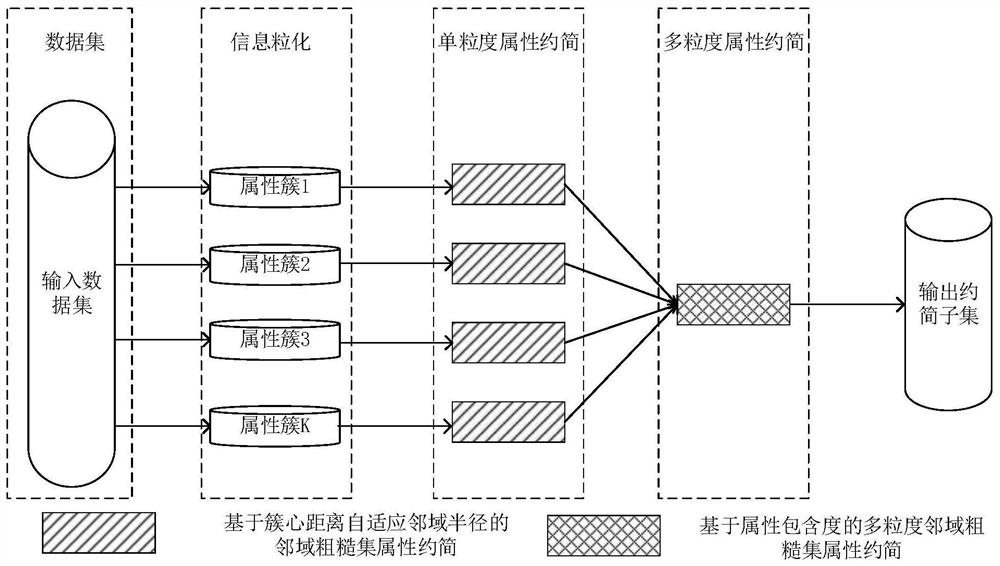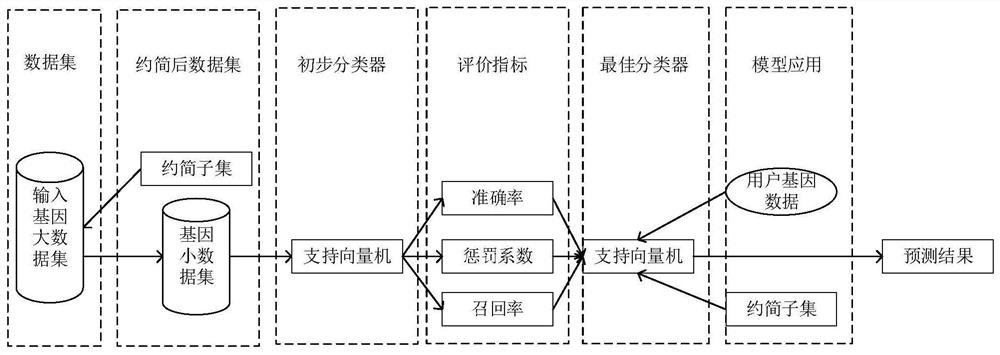Multi-granularity breast cancer gene classification method based on dual adaptive neighborhood radius
An adaptive neighborhood and classification method technology, applied in the field of medical information intelligent processing, can solve the problems of the influence of high dimensionality of genetic data on the early detection of breast cancer and the difficulty of selecting the neighborhood radius of the neighborhood rough set, so as to improve the detection accuracy , reduce complexity, reduce the effect of judgment difficulty
- Summary
- Abstract
- Description
- Claims
- Application Information
AI Technical Summary
Problems solved by technology
Method used
Image
Examples
Embodiment 1
[0076] see Figure 1 to Figure 5 , the present invention provides its technical scheme as, the multi-granularity breast cancer gene classification method based on double self-adaptive neighborhood radius, comprises the following steps:
[0077] Step 1: Read the breast cancer gene data set, convert the data into a quadruple decision information system S=(U,AT,V,f,δ), and the neighborhood decision information system S is expressed as follows:
[0078] S=(U,AT,V,f,δ), where U={x 1 ,x 2 ,x 3 ,...x m} represents the detection patient object set in the breast cancer gene data set, and m represents the number of breast cancer gene detection patients; C={a 1 , a 2 ,...,a n} represents a non-empty finite set of breast cancer gene features, n represents the number of breast cancer gene features; D={D 1 ,D 2} represents a non-empty finite set of category labels of breast cancer gene detection patients, AT=C∪D represents all gene attributes and decision attributes, d 1 Indicates ...
PUM
 Login to View More
Login to View More Abstract
Description
Claims
Application Information
 Login to View More
Login to View More - R&D
- Intellectual Property
- Life Sciences
- Materials
- Tech Scout
- Unparalleled Data Quality
- Higher Quality Content
- 60% Fewer Hallucinations
Browse by: Latest US Patents, China's latest patents, Technical Efficacy Thesaurus, Application Domain, Technology Topic, Popular Technical Reports.
© 2025 PatSnap. All rights reserved.Legal|Privacy policy|Modern Slavery Act Transparency Statement|Sitemap|About US| Contact US: help@patsnap.com



